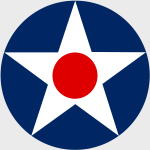Forces of Valor FOV812060A RAF Curtiss P-40B Tomahawk Fighter - No.112 Squadron, North Africa, October 1941 (1:72 Scale)
"This nation will remain a neutral nation, but I cannot ask that every American remain neutral in thought as well. Even a neutral has a right to take account of facts, even a neutral cannot be asked to close his mind or close his conscience. I have said not once but many times that I have seen war and that I hate war; I say that again and again. I hope the United States will keep out of this war, I believe that it will. And I give you assurance and reassurance that every effort of your government will be directed toward that end. As long as it remains within my power to prevent there will be no blackout of peace in the United States."
- President Franklin Delano Roosevelt, September 5th, 1939
 The P-40 was the best known Curtiss-Wright designed airplane of the Second World War. It was also one of the most controversial fighters, vilified by many as being too slow, lacking in maneuverability, having too low a climbing rate, and being largely obsolescent by contemporary standards even before it went into production. The inadequacies of the P-40 were even the subject of a Congressional investigation after the War ended.
The P-40 was the best known Curtiss-Wright designed airplane of the Second World War. It was also one of the most controversial fighters, vilified by many as being too slow, lacking in maneuverability, having too low a climbing rate, and being largely obsolescent by contemporary standards even before it went into production. The inadequacies of the P-40 were even the subject of a Congressional investigation after the War ended.
While these criticisms were certainly valid, it is also true that the P-40 served its country well, especially in China and Burma, during the opening phase of the War in the Pacific when little else was available to the US Army Air Corps. Along with the P-39 Airacobra, the P-40 was the only American fighter available in quantity to confront the Japanese advance until more modern aircraft could be delivered to front line squadrons.
This particular 1:72 scale replica of a RAF Curtiss P-40B Tomahawk fighter that was attached to No.112 Squadron, then deployed to North Africa during October 1941.
Now in stock!
Dimensions:
Wingspan: 6-inches
Length: 5-1/2-inches
Release Date: February 2023
Historical Account: "From Warhawk to Tomahawk" - The RAF's P-40B or Tomahawk IIA had extra .30 in (7.62 mm) U.S., or .303 in (7.7 mm) machine guns in the wings and a partially protected fuel system; the P-40C or Tomahawk IIB added underbelly drop tank and bomb shackles, self-sealing fuel tanks and other minor revisions, but the extra weight did have a negative impact on aircraft performance. (All versions of the P-40 had a relatively low power-to-weight ratio compared to contemporary fighters.







![RAAF Boeing F-18A Hornet Strike Fighter - 2 Operational Conversion Unit, RAAF Base Williamtown, New South Wales, "30th Anniversary," 2015 [Anniversary Scheme] (1:72 Scale)](http://cdn4.volusion.store/qh9e9-jdqv9/v/vspfiles/photos/HA3534-1.jpg?v-cache=1740197136)

